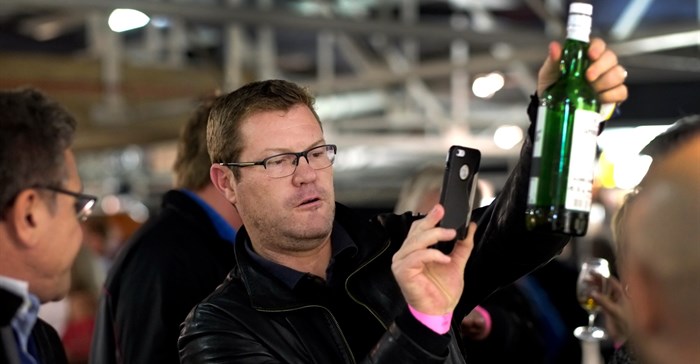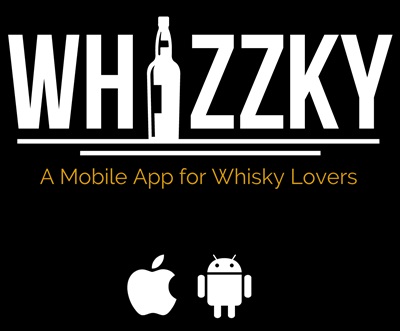
Top stories




It is a mobile application for both Android and iOS that enables the scanning of whisky bottle labels, which are then matched against a database of images. The tool is called Pixel Match and was developed by evolveIT, co-owners of the app.
Pixel Match makes use of both optical character recognition and pattern recognition; the hybrid ensures that labels that look similar but only vary in age statement, for example, are matched correctly.
While some may consider the app somewhat niche, there are many whisky lovers in South Africa – 4.1 million to be exact, while only 3.3 million drink brandy. South Africa is the seventh largest export market for Scotch whisky by volume after France, the US, India, Spain, Brazil and Germany. South African whisky drinkers have grown by 32% over the past 6 years and in 2015, consumed 18,695,075 bottles of whisky worth £39.9 million, making it the 11th largest export market in the world for Scotch whisky by value.

South Africa is host to the world’s largest whisky festival and a series of smaller Whisky Live celebrations. The Whisky Live Festival held annually in Sandton attracts 10,000 people over 3 nights. The impressive number of international presenters and whisky experts attracted to the Festival come to engage with the diverse audience who not only have a love of whisky in common, but who have a burgeoning thirst for knowledge.
Just as whisky drinkers in the East see whisky as a symbol of sophistication and a means of ‘badging’, alongside other luxury items such as cars, fine clothing and expensive watches, so too does the emerging middleclass in South Africa. Beyond whisky as a status symbol, though, there is the need to be able to converse knowledgably about it. It is this need – unanswered by any other app in South Africa – that resulted in Whizzky.
Whizzky was soft-launched at Whisky Live Festival in Sandton in November 2015 where a few hundred users signed up in exchange for five additional tasting vouchers to use at the event. From there, growth was purely organic until the next series of Whisky Live events in Cape Town in April, Durban in May and Pretoria in June 2016 where downloads were driven through the same mechanic and promoters assisted in showing users how the app worked.
By the end of June, the app had moved beyond the realms of the minimum viable product (MVP) that was launched in November 2015 and a number of features had been added, aside from bottle label scanning. Users could now add their favourite whiskies and add their own tasting notes. What drove its organic growth was the addition of the whisky clubs feature, where users can start a whisky club on the app and invite members to join it. Members can see each other’s tasting notes, favourites and scan activity in the club’s newsfeed.
Further organic growth was driven by increasing numbers of high app ratings, which drove the app listing up the ranks in both Android’s Play store and Apple’s app store.
Content has been pivotal to keeping interest and articles – particularly those about whisky investments – are read by up to 15% of the total user base, indicating again the user base’s desire to learn more about the water of life.
Currently at 14,000 users, Whizzky is growing at a rate of 50-75 new users per day – more at weekends – and perhaps most exciting is their consistent engagement with the app. They are adding whiskies to their online collections, their wish lists and their favourites; rating whiskies and writing in-depth tasting notes for their own private use or which they make public. They are also using the in-app tasting note tool that guides them through what flavours to look out for. The app aggregates flavour profiles selected by users and the cumulative profiles are available under each whisky, together with the official tasting notes, history of the whisky/ distillery and other information.
Whizzky is at a tipping point: it is now a fully functional, world-class mobile application and it is about to explode if the current organic growth is anything to go by. No marketing has been undertaken on a global scale and yet 40% of all users are not South African - so where to next?
Monetisation is obviously at the forefront of the co-owners’ thinking. Whizzky co-owners, Whisky Live owners John Cook and Ken Varejes, say, “Whisky Live has a category-wide whisky database and the app has been developed partly to leverage and enhance the event but mostly to add value to the whisky brands who exhibit with us. The app offers them the opportunity to learn more about their consumers and – perhaps even more importantly – to engage with them in more relevant ways based on what they learn.”
The team would like to start online retail but this presents a myriad of challenges: the South African market requires whisky to be bottled in 750ml and at 43% alcohol by volume (ABV) which limits the variety of whiskies that may be imported into South Africa for sale. Globally, whisky is sold at 40% ABV and in 700ml bottles. Furthermore, the margins are already low and, when split with logistics partners and liquor distributors, the viability of monetisation through this route becomes questionable.